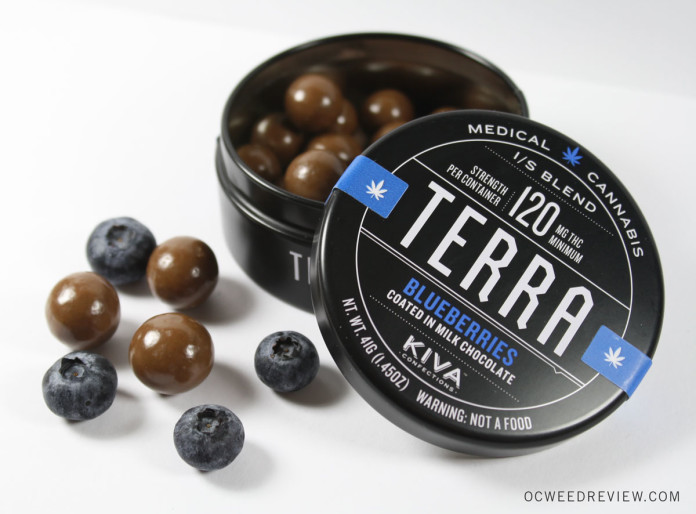As of 2021, the amount of Americans smoking tobacco cigarettes has reduced from 20.9% in 2015 to 11.5%. Despite the decline, cigarette smoke remains the leading cause of preventable diseases, causing more than 480,000 deaths a year.
Many people smoke solely tobacco, and others smoke only cannabis. Some studies show that the likelihood of smoking either increases the probability of both as well as the user's dependence on the substances.1,2
While they can be consumed independently, cannabis and tobacco can also be mixed together. The mixture of the two substances can be referred to as "moke" rolled into a joint known as a "spliff." The practice of smoking both nicotine and cannabis has led to questions about the combo.
It is widely understood that smoking, nicotine, and cannabis each have adverse side effects, but what about when combined?
What is Nicotine?
Nicotine is a natural chemical compound in tobacco leaves that acts as a botanical insecticide. These leaves produce several other elements, but nicotine is the most abundant. Vegetables like potatoes, tomatoes, and eggplants also contain nicotine at low levels.
When tobacco leaves are chewed on or lit and inhaled, the nicotine is carried through the bloodstream via the designated mechanisms. For inhalation, it undergoes circulation through the lungs, and for chewing, it is absorbed through the gums. The nicotine then travels to the brain and affects the reward center in the limbic system.
Nicotine releases dopamine, the "feel good" chemical causing stimulating, pleasurable sensations, which can make consumers dependent on it. Studies note that nicotine addiction builds because it modulates the enzyme that helps to degrade dopamine.3 While nicotine consumption can feel good, users require higher levels over time to achieve the same effects.
Aside from its addictiveness, nicotine and its long list of adverse side effects have been a research topic of study for decades. It affects almost every major organ in the body, including the lungs, heart, reproductive system, and kidneys, and is well-documented for being a cancer-causing substance.
While these more severe effects occur after habitual cigarette consumption, nicotine also has a rapid onset, causing immediate irritation and burning to the mouth and throat. It can also cause increased salivation, nausea, stomach pain, and diarrhea. It is one of the most toxic poisons to the human body.4
Despite the extreme adverse effects on the body, nicotine addiction remains prevalent in adults across America. Smoking traditional cigarettes has lessened over the years, but in its place came the vaporizer touted as the “healthy alternative.” It is still a newer technology, but emerging research notes that vaporizing nicotine has the same adverse side effects as smoking it.
What Happens If You Take Both Nicotine and Weed?

Nicotine and weed are substances that consumers enjoy, but they can also cause adverse side effects to their health. Nicotine and weed are also both addictive. Cannabis has many potentially beneficial properties, but adverse effects can still occur, especially if consumed through traditional smoking methods.
Research regarding the administration of weed and nicotine is still limited and mixed depending on the observed issue. A recently published study has found that cannabis use, independent of tobacco use, had significant associations with cardiovascular events such as stroke but had lower rates of risks such as obesity or diabetes.5 Other research shows that cannabis users had a higher risk of cardiovascular events when they were not tobacco users vs. when they were tobacco users.6
Another review of studies focused on the effects cannabis and nicotine have on adolescents. These researchers noted that, in general, research is lacking. However, nicotine does seem to mask cannabis’ adverse effect on cognition, and preliminary evidence shows the hippocampus is affected differently in those who co-use.7
In a smaller study of 24 participants, tobacco use only offset the adverse verbal recall effects of cannabis rather than the intoxicating effects. Verbal recall is the ability to remember and reproduce words and information, one of the capabilities most commonly affected by cannabis use. Researchers note that nicotine’s ability to reduce these effects may cause an increase in cannabis consumption.8
In contrast, another study found that cannabis consumption decreased the amount of cannabis and tobacco consumed. This study also found that cannabis and tobacco use had no noticeable effects when combined.9
The effects that the co-use of cannabis and nicotine may have on the body still need to be further examined as the results are minimal and conflicting depending on the participants. With what is known about the adverse effects of cannabis and nicotine, it may be best to minimize the smoking of both.
What About Nicotine and Other Types of Weed Consumption?
Tobacco and cannabis are traditionally consumed through methods of smoking. Vaping the substance has also become increasingly popular over the last ten years and is often viewed as the “healthy alternative” to cigarettes, joints, or bowls.
E-cigarettes for vaping tobacco do reduce the intensity of harm on the throat and lungs, but the concentrated amounts of nicotine can make them more addictive than cigarettes.10 The same is true for high-THC cannabis vapes and their concentrated oils.11
There is no safe way to ingest tobacco and nicotine, but alternative methods to smoking cannabis reduce the adverse effects on the body. Methods like tinctures, capsules, topicals, or edibles allow consumers to experience the potential benefits while reducing the harm done to the cardiovascular and respiratory systems.12
What About Weed Cigarettes?

Weed cigarettes is a term that can refer to two things. Often, it is just another term for a joint. Other times, it refers to blending tobacco and weed together (a mixture referred to as moke) and rolling into a joint. This type of joint is more commonly called a spliff.
Spliffs can be appealing to users for a couple of reasons. Adding tobacco to cannabis can make a stash last longer, and some studies even note that consumption of both reduces when combined. Mainly, users praise the increased ‘buzz’ nicotine adds to the intoxicating effects of cannabis.13
Whether smoked simultaneously in a spliff or individually at different times, combining the adverse effects of smoking cannabis and nicotine remains an unfavorable habit from a health perspective. The combo can increase the harmful effects on the cardiovascular and pulmonary systems and also increase the risk of dependence on both substances.14
Who Should Stay Away from Taking Both Nicotine and THC?
Nicotine consumption through tobacco is never recommended, even for the healthiest person, as it can affect several major functions of the body and cause cancer. Medical professionals recommend pregnant and breastfeeding individuals be even more cautious with nicotine and exposure to it through secondhand smoke because it may cause congenital disabilities.15
Cannabis is a bit different. There are many potential benefits that consumers may use it for; even so, everyone responds to it differently, and adverse effects are a risk.
Doctors recommend that patients with pre-existing conditions and taking medications discuss with a medical professional before starting any cannabis consumption, especially patients with ailments related to the cardiovascular or respiratory system. Patients with these types of conditions may be best switching to alternative consumption methods like edibles, tinctures, capsules, or topicals.16
Precautions When Using Nicotine and Weed

Combining cannabis and nicotine is not recommended if patients are concerned about their health. If you choose to consume both, it may be best to do so in minimal doses and/or modify each intake to reduce the risk of adverse effects.
Although nicotine consumption is never recommended, nicotine replacement therapy or NRT is the exception. This method uses smoking replacements such as gum, patches, or nasal spray with a small amount of nicotine meant to reduce the desire to smoke and withdrawal symptoms. NPTs are considered safe alternatives that remove the rest of the toxic chemicals that cigarettes produce, drastically decreasing the severe impacts on health and cancer risks.
Alternative methods of using cannabis may also help reduce certain adverse risks. Consumers may want to look into forms like edibles, tinctures, or capsules. Keeping dosages low can also help mitigate adverse effects and low tolerance levels. Researchers recommend consumers start with products with a balance of THC and CBD at doses of 2.5 to 5mg once or twice daily, with a max of 40mg a day.17
The only way to avoid all adverse side effects from nicotine and cannabis is to abstain from use.
References
- Weinberger AH, Delnevo CD, Wyka K, et al. Cannabis Use Is Associated With Increased Risk of Cigarette Smoking Initiation, Persistence, and Relapse Among Adults in the United States. Nicotine & Tobacco Research. 2019;22(8):1404-1408. doi:https://doi.org/10.1093/ntr/ntz085 ↩︎
- Akbar S, Tomko RL, Salazar González C, Squeglia LM, McClure EA. Tobacco and cannabis co-use and interrelatedness among adults. Addictive Behaviors. 2019;90:354-361. doi:https://doi.org/10.1016/j.addbeh.2018.11.036 ↩︎
- Tiwari RK, Sharma V, Pandey RK, Shukla SS. Nicotine Addiction: Neurobiology and Mechanism. J Pharmacopuncture. 2020;23(1):1-7. doi:10.3831/KPI.2020.23.001 ↩︎
- Mishra A, Chaturvedi P, Datta S, Sinukumar S, Joshi P, Garg A. Harmful effects of nicotine. Indian J Med Paediatr Oncol. 2015;36(1):24-31. doi:10.4103/0971-5851.151771 ↩︎
- Jeffers AM, Glantz S, Byers AL, Keyhani S. Association of Cannabis Use With Cardiovascular Outcomes Among US Adults. Journal of the American Heart Association. 2024;0:e030178. doi:https://doi.org/10.1161/JAHA.123.030178 ↩︎
- Winhusen T, Theobald J, Kaelber DC, Lewis D. The association between regular cannabis use, with and without tobacco co-use, and adverse cardiovascular outcomes: cannabis may have a greater impact in non-tobacco smokers. Am J Drug Alcohol Abuse. 2020;46(4):454-461. doi:10.1080/00952990.2019.1676433 ↩︎
- Hernandez Mejia M, Wade NE, Baca R, Diaz VG, Jacobus J. The Influence of Cannabis and Nicotine Co-use on Neuromaturation: A Systematic Review of Adolescent and Young Adult Studies. Biol Psychiatry. 2021;89(2):162-171. doi:10.1016/j.biopsych.2020.09.021 ↩︎
- Hindocha C, Freeman TP, Xia JX, Shaban ND, Curran HV. Acute memory and psychotomimetic effects of cannabis and tobacco both “joint” and individually: a placebo-controlled trial. Psychological Medicine. 2017;47(15):2708-2719. doi:https://doi.org/10.1017/s0033291717001222 ↩︎
- Hindocha C, Freeman TP, Curran HV. Anatomy of a Joint: Comparing Self-Reported and Actual Dose of Cannabis and Tobacco in a Joint, and How These Are Influenced by Controlled Acute Administration. Cannabis and Cannabinoid Research. 2017;2(1):217-223. doi:https://doi.org/10.1089/can.2017.0024 ↩︎
- Feeney S, Rossetti V, Terrien J. E-Cigarettes-a review of the evidence-harm versus harm reduction. Tob Use Insights. 2022;15:1179173X221087524. Published 2022 Mar 29. doi:10.1177/1179173X221087524 ↩︎
- Chadi N, Minato C, Stanwick R. Cannabis vaping: Understanding the health risks of a rapidly emerging trend. Paediatr Child Health. 2020;25(Suppl 1):S16-S20. doi:10.1093/pch/pxaa016 ↩︎
- Barrus D, Capogrossi K, Cates S, et al. Tasty THC: Promises and Challenges of Cannabis Edibles. Published online November 15, 2016. doi:https://doi.org/10.3768/rtipress.2016.op.0035.1611 ↩︎
- Hunault CC, Mensinga TT, Koen, et al. Cognitive and psychomotor effects in males after smoking a combination of tobacco and cannabis containing up to 69 mg delta-9-tetrahydrocannabinol (THC). Psychopharmacology. 2008;204(1):85-94. doi:https://doi.org/10.1007/s00213-008-1440-0 ↩︎
- Hindocha C, Shaban ND, Freeman TP, et al. Associations between cigarette smoking and cannabis dependence: a longitudinal study of young cannabis users in the United Kingdom. Drug Alcohol Depend. 2015;148:165-171. doi:10.1016/j.drugalcdep.2015.01.004 ↩︎
- Nicotine. In: Drugs and Lactation Database (LactMed®) [Internet]. National Institute of Child Health and Human Development; 2023. https://www.ncbi.nlm.nih.gov/books/NBK501586 ↩︎
- MacCallum CA, Lo LA, Boivin M. “Is medical cannabis safe for my patients?” A practical review of cannabis safety considerations. European Journal of Internal Medicine. 2021;89:10-18. doi:https://doi.org/10.1016/j.ejim.2021.05.002 ↩︎
- Jugl S, Goodin AJ, Brown JD. Climbing the Evidence Pyramid: Dosing Considerations for Medical Cannabis in the Management of Chronic Pain. Med Cannabis Cannabinoids. 2023;6(1):41-45. Published 2023 Apr 26. doi:10.1159/000530251. ↩︎
The information in this article and any included images or charts are for educational purposes only. This information is neither a substitute for, nor does it replace, professional legal advice or medical advice, diagnosis, or treatment. If you have any concerns or questions about laws, regulations, or your health, you should always consult with an attorney, physician or other licensed professional.




